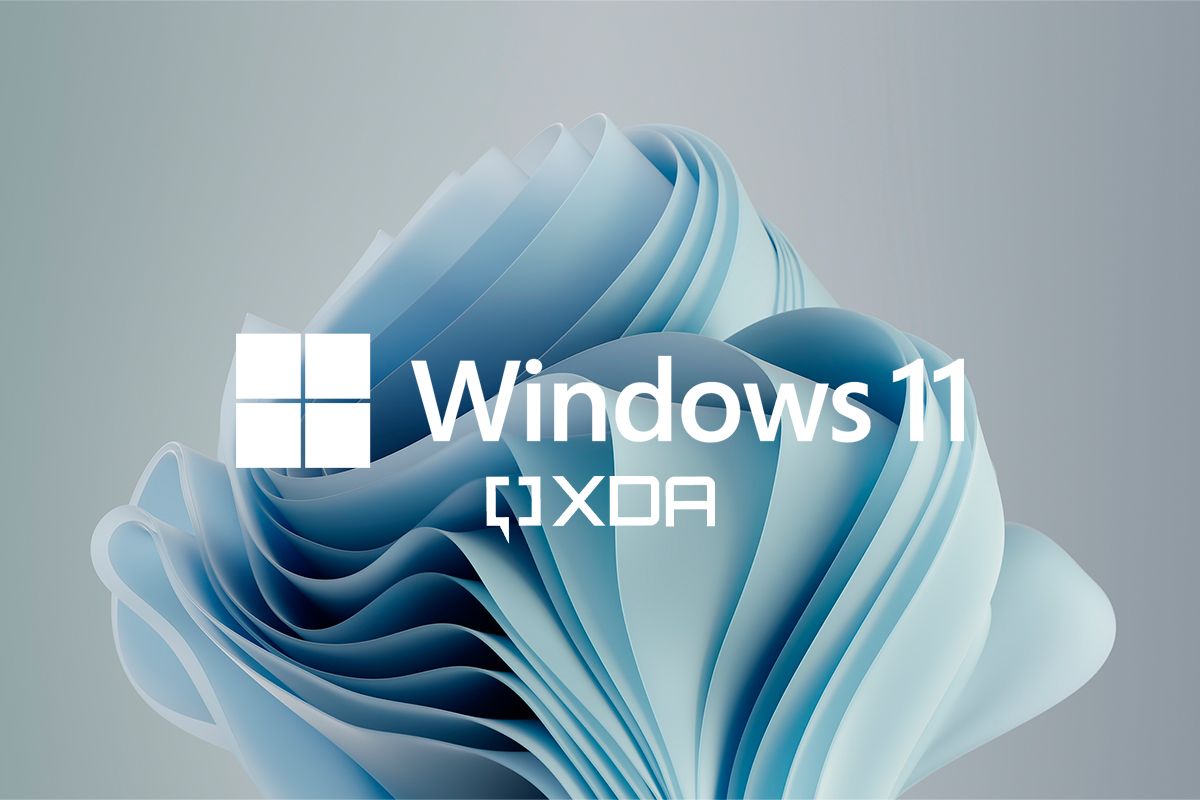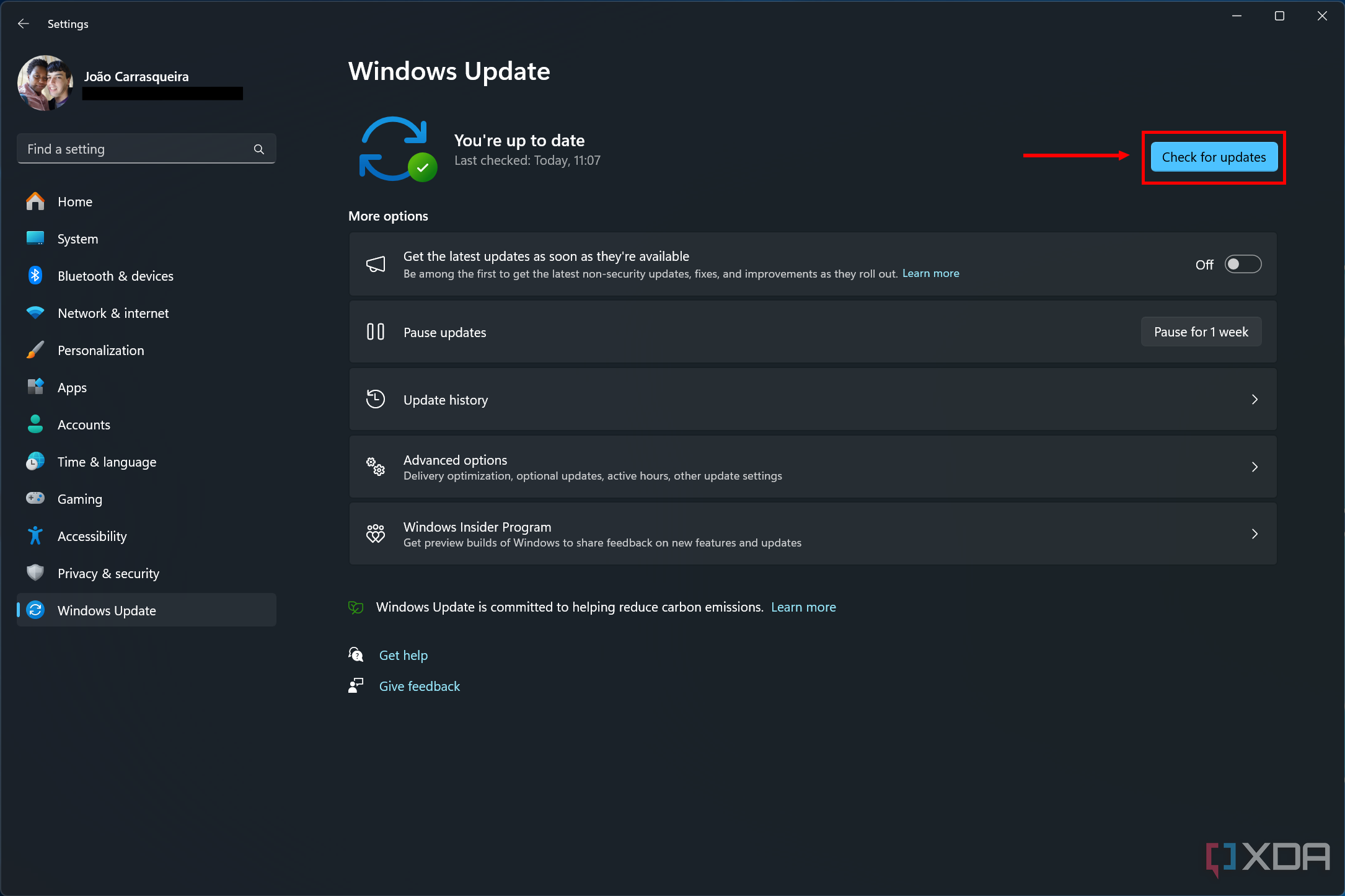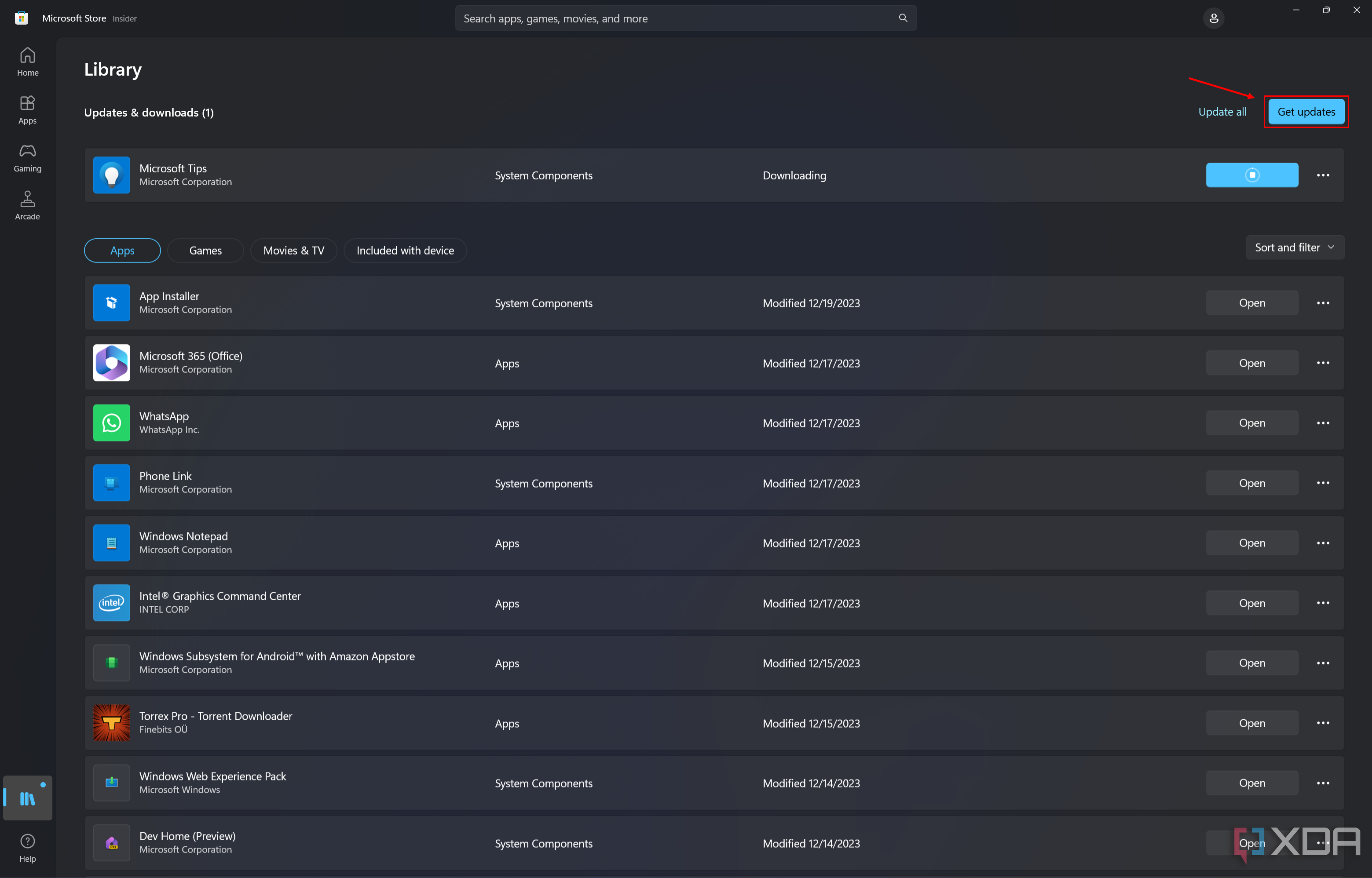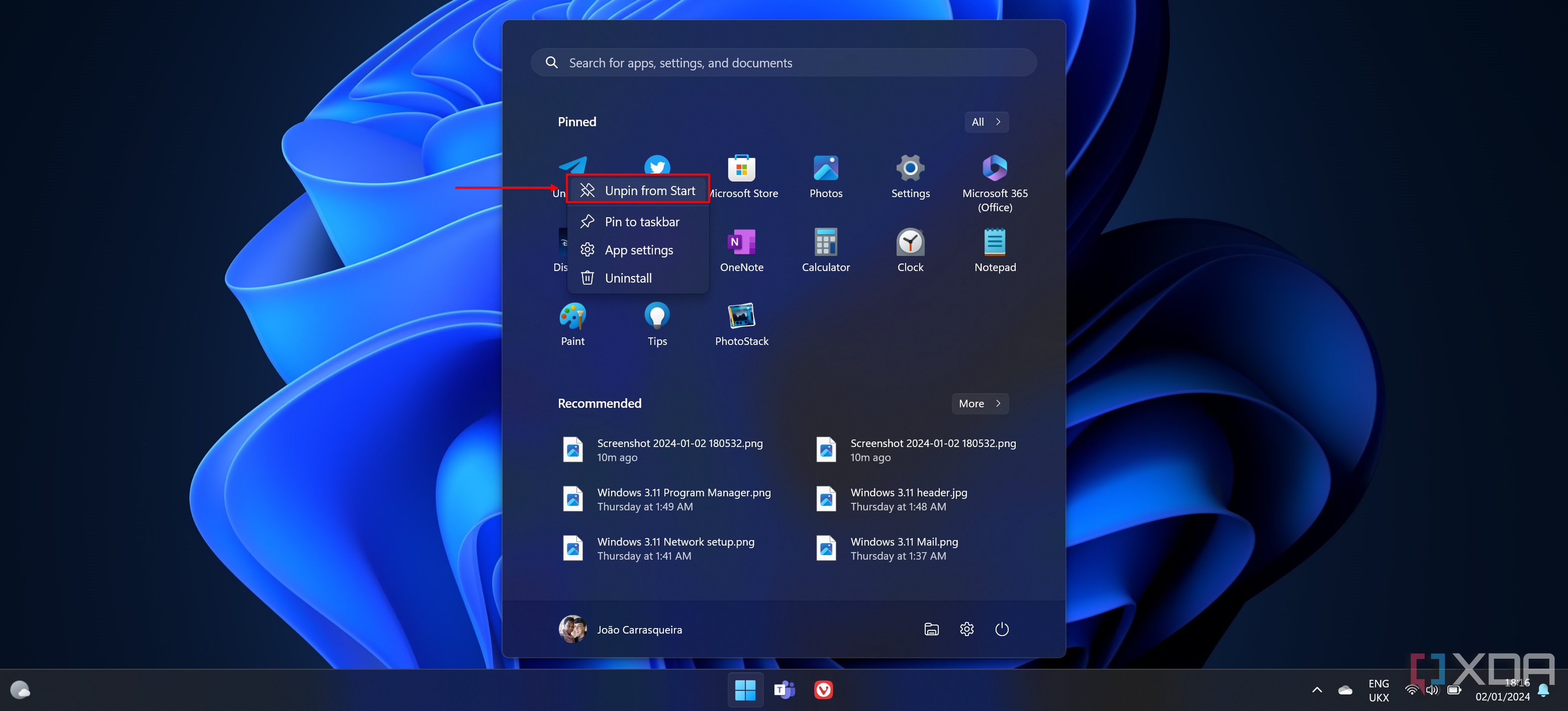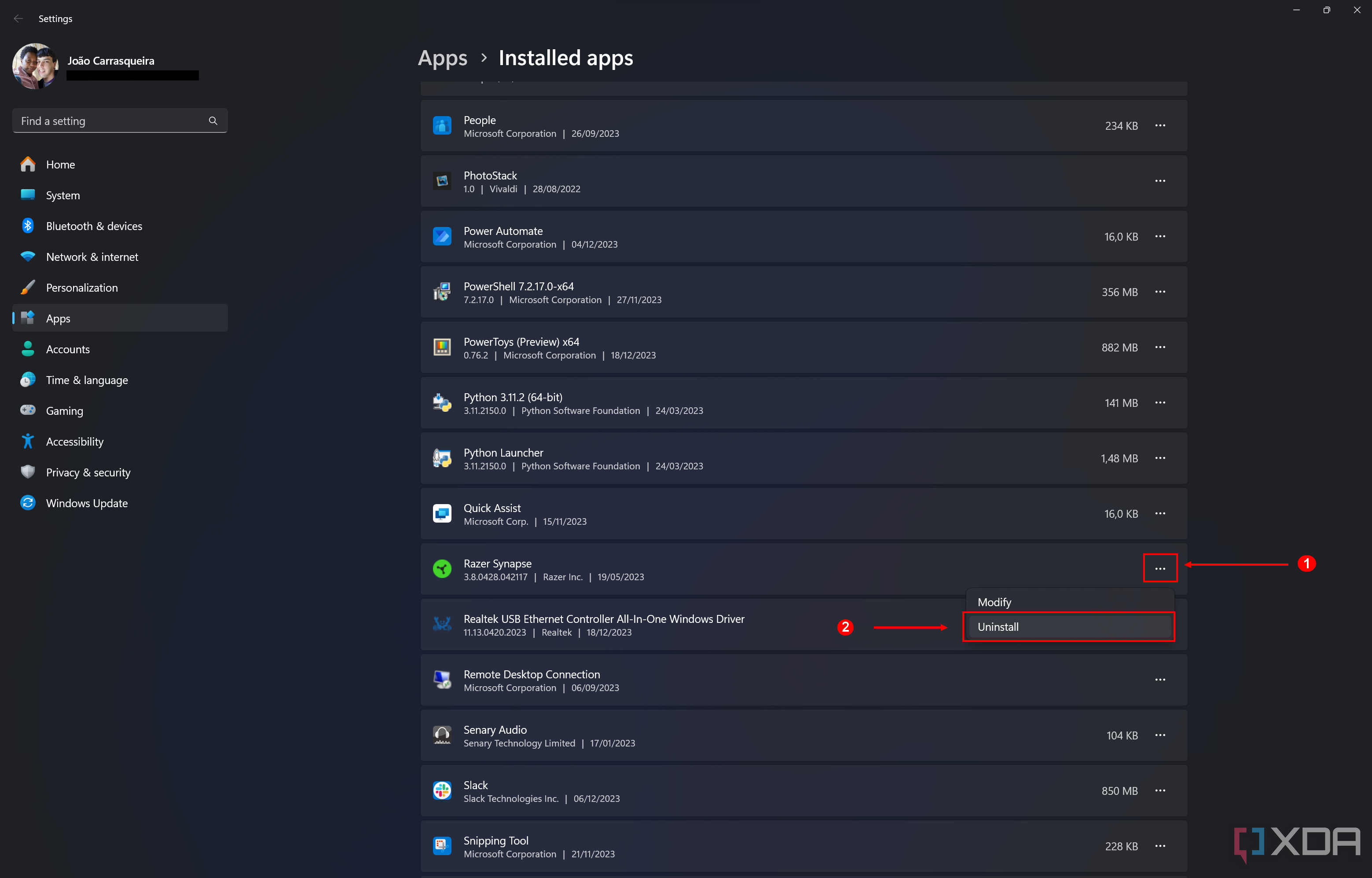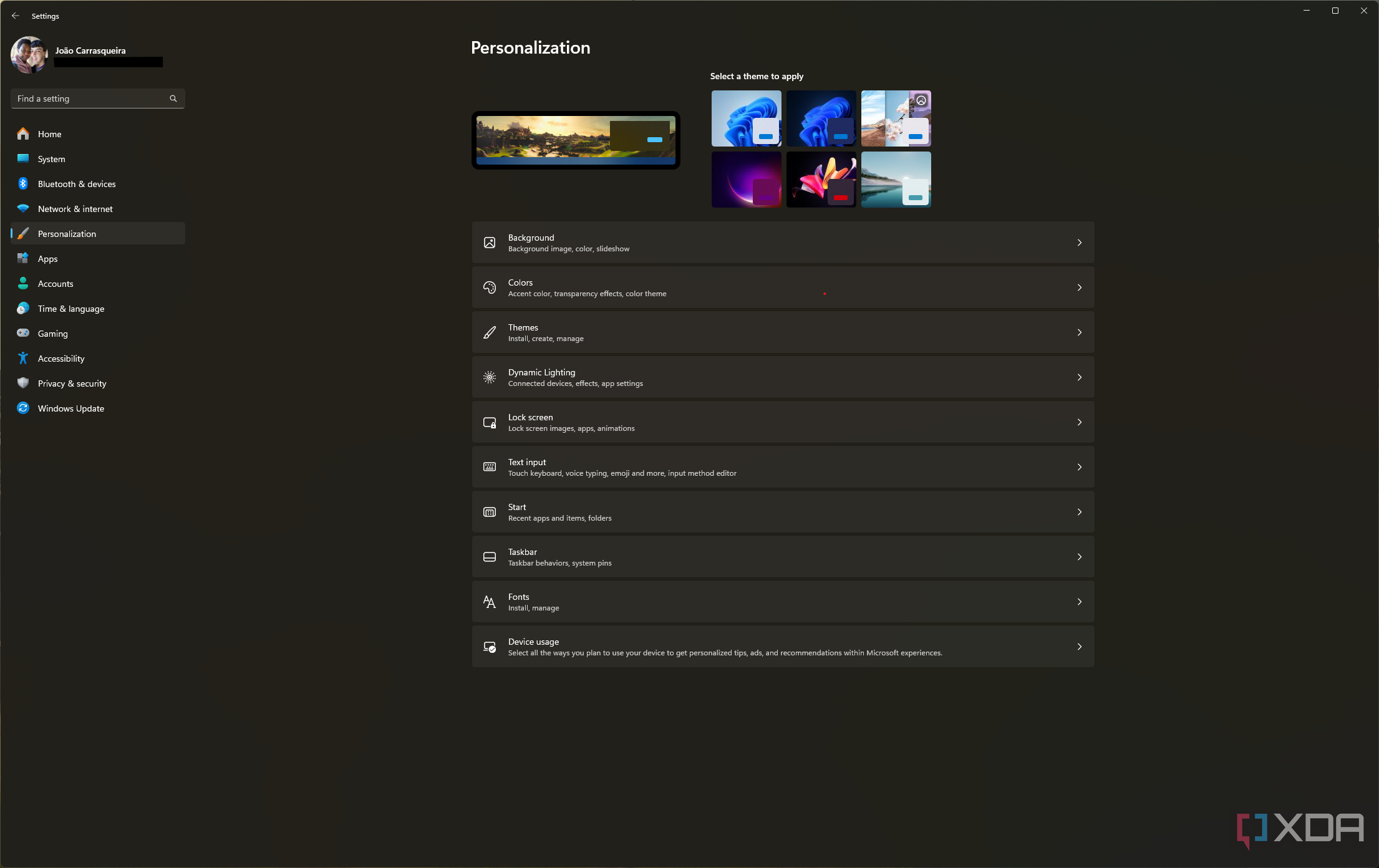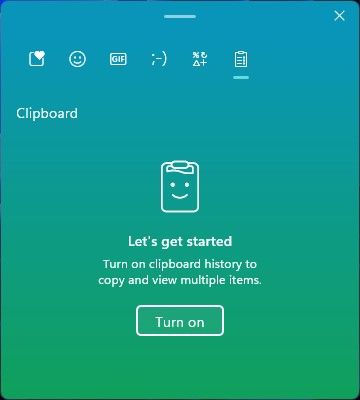Quick Links
Purchasing the latest laptop can feel overwhelming. Especially when you are new to the Windows ecosystem, it may take a while to familiarize yourself with Windows 11 OS. We are here to speed up your initiation process. Whether you are a professional, gamer, or a normal consumer, here are the first 10 things to do with your new Windows PC which will have the most impact for a smoother experience.
Many of these steps depend on your own usage goals, so you don't have to do them all. However, we certainly do recommend some of them overall, as they'll help you make the most of your shiny new device.
Check for updates
It can be annoying, but keeping your computer up to date is important, particularly for security reasons, but it can also add new features to your PC. There's a very good chance that your PC came with an outdated version of Windows 11. You can grab the latest version — for example, Windows 11 version 23H2 — by checking for updates promptly. To get the latest update for Windows:
1. Open the Settings app
2. Go to the Windows Update page
3. Click Check for updates.
Any updates that are available will begin downloading and installing. Some of them may require you to restart your PC. We also recommend checking back once the update has been installed, as more further updates may become available thereafter.
You may also want to update the apps that come pre-installed with Windows, which can be updated separately using the Microsoft Store. To do this:
1. Open the Microsoft Store.
2. Click the Library page in the bottom left corner.
3. Here, click Get updates, then wait it out. Almost all the preinstalled apps are likely to have updates, so this process may take a while.
With that out of the way, you'll have all of the latest security improvements and features available.
Clean up your taskbar and Start menu
When you first set up Windows 11, you may see a lot of icons pinned to your taskbar and Start menu. While some of them are useful, others aren't, so it's a good idea to clean up and remove anything you don't need from your sight. Let's start with the taskbar.
1. Right-click on an empty area of the taskbar and click Taskbar settings.
2. Check the settings page that lets you disable or enable the icons for Windows features.
3. To directly remove apps pinned to the taskbar, simply right-click on their icon and click Unpin from taskbar.
As for the Start menu, you'll see a few apps pinned to the main page when you open it up, many of which you might not want. Simply right-click the icons of the apps you don't care about and choose Unpin from Start. You can also click Uninstall if you don't want to have the apps on your PC at all.
If your PC is running Windows 11 version 22H2 or higher, you can even create folders in the Start menu to organize your apps even better by grouping them per your preference. Simply drag one app icon over another in the pinned area, and the system will create a folder containing both apps.
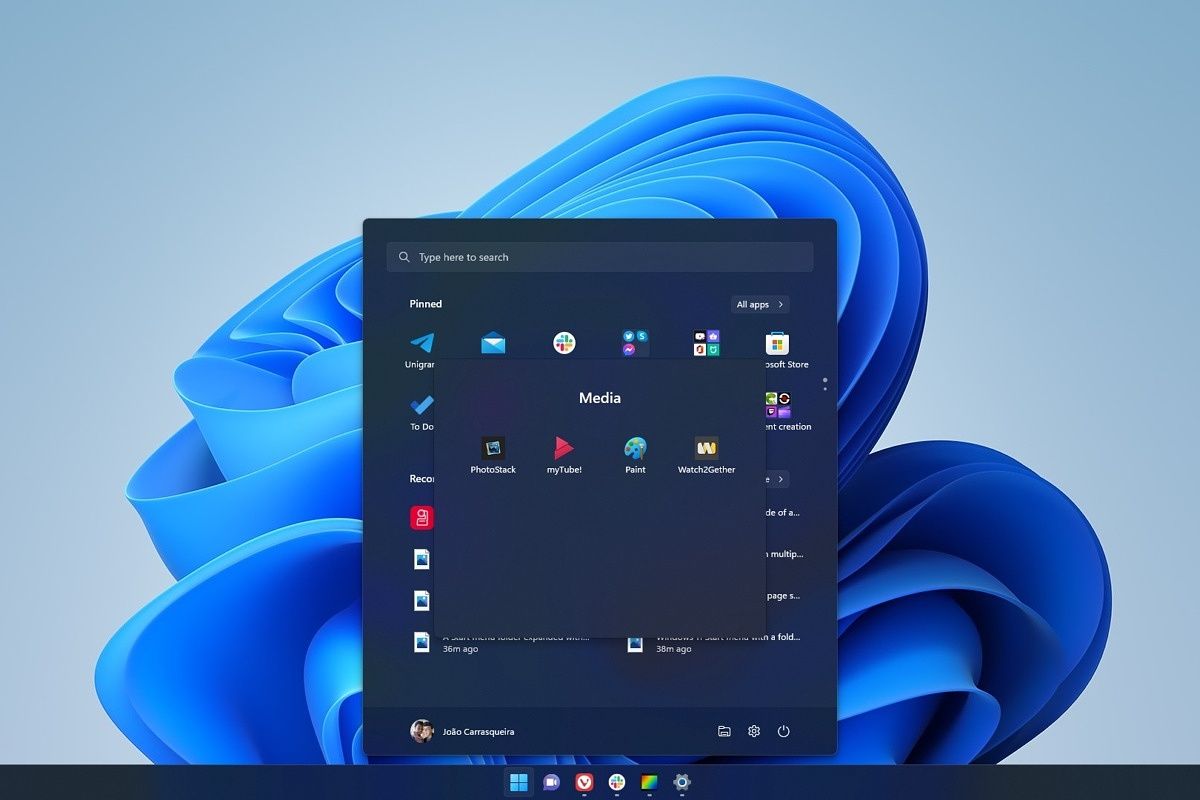
How to use Start menu folders in Windows 11 version 22H2
Windows 11 version 22H2 comes with the ability to create folders on the Start menu. Here's what you need to know to do it yourself.Uninstall pre-installed software that you don't need
Windows PCs traditionally come with a lot of pre-installed software. Windows 11 itself includes a lot of apps out of the box, but if you got a new PC, there's a good chance that the manufacturer has also installed a lot of things you don't actually care about.
1. Press Windows + I keys to open up Settings. Select Apps from the sidebar.
2. Open Installed Apps.
3. Glance over the apps list and click the three-dot menu beside an app if you'd like to remove it. Select Uninstall and follow the on-screen instructions.
We do advise you to look out for apps that might help your PC function as intended though. Be cautious about deleting things when you aren't certain about that, because some manufacturers include their own update tools for drivers, and you probably wouldn't want to uninstall those.
Disable unnecessary startup apps
On top of apps being preinstalled on your device, computers will often come with apps that are set to start by default along with the system when it boots. This can slow down your PC without much benefit, so it's a good idea to go through the list and see which apps you really need to have launched at startup. You can disable some so that they only open on-demand when you need them to. To see the apps that are currently launching when you power on your PC (and disable that, if desired), simply follow these steps:
1. Right-click the taskbar and choose Task Manager.
2. Switch to the Startup apps tab on the left side.
3. Click the app you do not want to automatically launch, then click Disable in the bar at the top.
Change the look of Windows 11
Windows 11 gives you a few ways you can customize the way it looks so that it caters to your own unique style.
1. Open the Settings app and choose the Personalization page from the menu. You'll see all the options you can change.
2. You can choose from a few preset themes at the top of the page, which change your background image and theme colors. You will also see more individual options, listed below.
3. Select Background to change the background appearance of your desktop, including setting slideshows.
4. The Colors page lets you choose between light or dark mode; you can also select an accent color which can be pretty much any shade you want.
5. The Themes page includes packages that change both of these settings, plus customizations for sound and the mouse cursor style.
Taskbar personalization is another interesting option. You can adjust the orientation of the taskbar icons, which are centered by default, back to the left corner of the screen as previous Windows versions had.
Enable clipboard history
Copying and pasting items is something we're all used to doing, but being limited to only having one item on your clipboard at a time can be annoying. Windows 11 (and 10) has a fix for this though - you can now keep multiple items in your clipboard if you enable clipboard history. Press Windows key + V and the clipboard history window will open. You'll probably see that this multi-clip feature is disabled by default; just click Turn on, and it will be enabled from that point forward. Whenever you want to access items in your clipboard history, press Windows key + V again to bring up the list and click the item you want to copy.
Once you select an item in the clipboard history, that will become the item you can paste using Ctrl + V until you choose a different item from the list or copy something else new. This function can be useful if you want to paste something multiple times. Do keep in mind that the clipboard history resets when you restart or turn off your computer, but you can also pin items so that they'll always be available.
Manage your notifications
Out of the box, almost every app that's installed on your PC is allowed to send you notifications, and that might become a little overwhelming. If you want to control which apps can send notifications and how those notifications work, head into the Settings app, navigate to the System section, then choose Notifications. Here, you'll see general notification settings along with all the apps on your PC which can send you notifications. You can change the settings for any or all of them to suit your preferences.
If you scroll to the bottom of this page you'll also find Additional Settings related to Windows notifications and tips that are supposed to help you use your PC. If you don't find these useful, you can disable them here.
Disable OneDrive backups
OneDrive is Microsoft's cloud storage service, and it's integrated with Windows 10 and 11 out of the box. By default, OneDrive is set to back up your Desktop, Pictures, and Documents folders automatically. While that can be a good thing, you might not want to use cloud storage all the time. Not to mention, you can end up with a lot of duplicates in the cloud, since OneDrive doesn't streamline things very well when backing up from multiple devices.
1. Click the cloud icon on your taskbar.
2. Click the cog icon at the top of the flyout, and choose Settings.
3. Switch to the Sync and backup tab.
4. Click Manage backup.
5. Turn off the backup for the folders that you don't want to be backed up to OneDrive.
If you scroll further down, you'll also find an Advanced settings option where you can choose how you want to access your OneDrive files on your PC. You can download your entire OneDrive library so that it's accessible offline, or use the files on-demand feature to free up disk space.
Install apps
This probably goes without saying, but one of the things you'll want to do is install the apps you care about the most. We asked our readers about which first five apps they install on Windows, where they offered some great suggestions. You can install apps from the Microsoft Store or from the internet. If you cannot install apps from the internet, your PC may have come with Windows 11 in S mode. If this is the case, go to the Settings app and scroll down to the Activation page, then choose the option that says Switch to Windows 11 Home or Switch to Windows 11 Pro (note that this is not where it reads Upgrade your edition of Windows, which is for Windows 11 Home users wanting to upgrade to Pro). The system takes you to the Microsoft Store to switch out of S mode so that you can install apps from anywhere.
Change the default browser on Windows
The web browser is arguably the most important app on your PC. Almost everything we do now is based on the web, so it's the app you probably care about the most. By default, Windows 11 comes with Microsoft Edge, which is a great browser already. But if you're more used to Google Chrome or something else, you might want to switch it out. You can download your favorite browser using the links below:
- Download Google Chrome
- Download Mozilla Firefox
- Download Opera
- Download Vivaldi
- Download Brave Browser
Once you've installed your favorite browser, you'll need to set it as the default, which you'll be prompted to do as soon as you launch it. If you click the button to change your default browser, you'll likely see a list of your installed apps, so you'll have to search for your browser and click it, then click the Set default button at the top of the page. This will change all the relevant file and protocol associations to the browser you just installed.
Get started with your latest purchase
These are just some of the recommendations for what you should do when you get a new PC, but you certainly don't need to follow all of these steps. At the end of the day, a computer should work well for you, but we think these tips will enable that to be the case for you. They may not seem like the most important things right away, but these steps can help ensure your experience will be as seamless as possible. You won't have to deal with unnecessary notifications, have your PC filled with apps you don't want, or use a browser you don't like. From here, you can use your PC to your heart's content, and it will be a much better experience than it would have been otherwise.
If your Windows machine feels slow after a while, check our separate guide to clean and speed up your PC.

